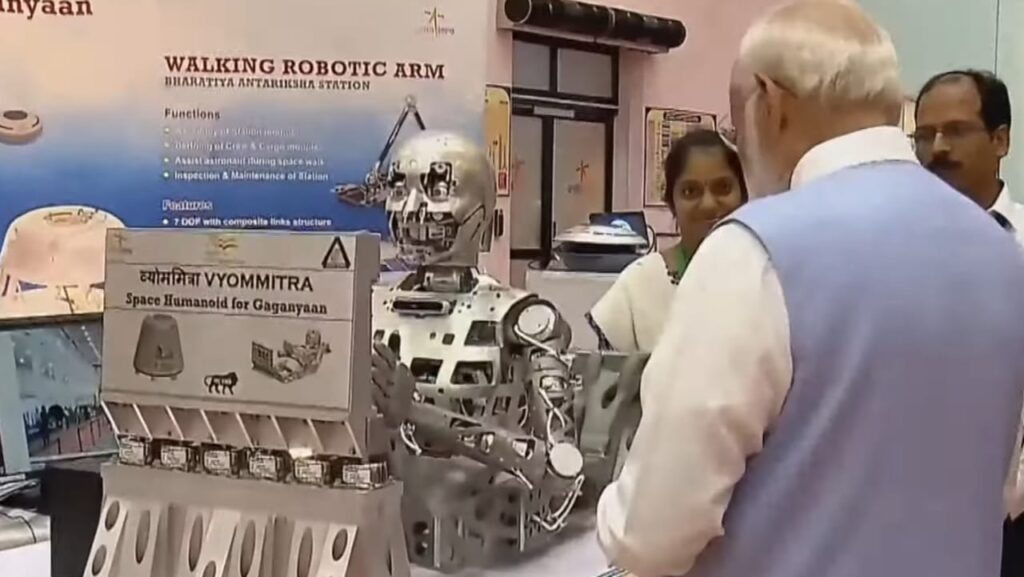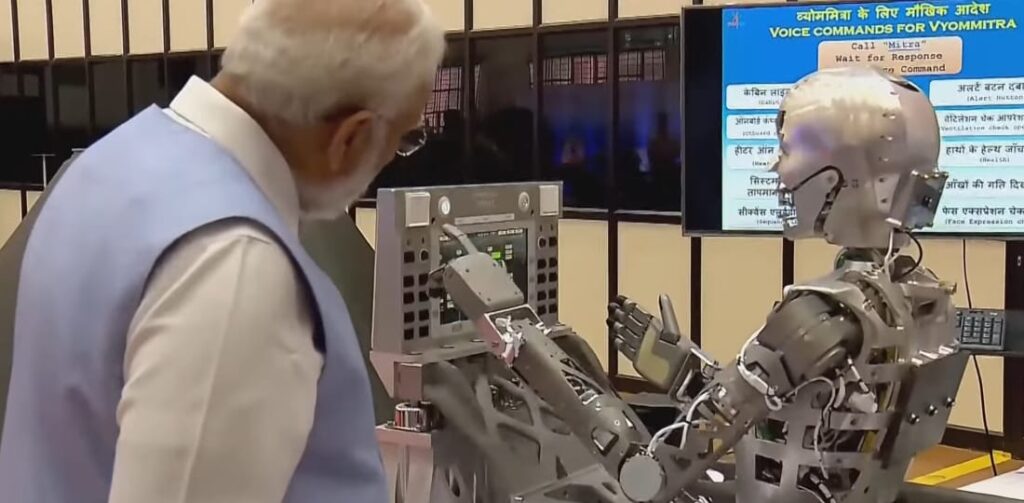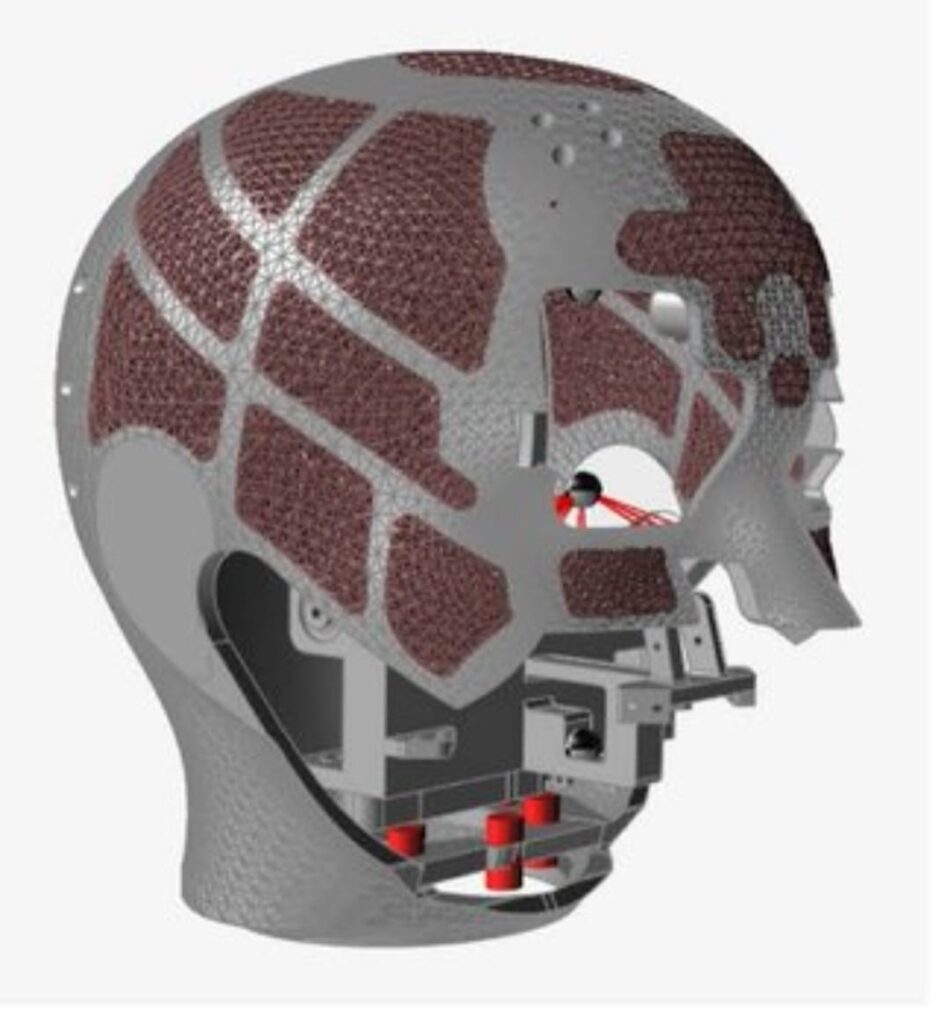Vyommitra, developed by the Indian Space Research Organisation (ISRO), This AI-powered and voice command humanoid robot, designed with a female appearance, is set to play a crucial role in India’s manned space mission plans, specifically in the Gaganyaan mission. Unlike traditional robots, Vyommitra has been equipped with features and capabilities to mimic and execute tasks similar to those performed by human astronauts, making her a key component in the preparatory stages of human space travel.
This cutting-edge female robot vyommitra is scheduled to travel to space on the Gaganyaan G2 mission, an initial mission before those involving human astronauts. Her responsibilities encompass performing experiments in microgravity and monitoring the module’s environment, and she is also set to join human astronauts on their space journey, assisting them.
Her name derives from the Sanskrit words “Vyoma,” meaning “space,” and “Mitra,” signifying “friend,” reflecting her role as a companion in the vastness of space. Designed as a half-humanoid, Vyommitra possesses a robotic torso and head, equipped with arms to perform tasks, though her legs, while present, lack functionality. This design enables her to float in microgravity environments, facilitating interaction with astronauts and the Gaganyaan spacecraft’s systems.

Role of Vyommitra in Gaganyaan Mission
The Gaganyaan mission is India’s first manned space mission, aiming to send Indian astronauts, or “Gagannauts,” into space. Vyommitra’s role in this mission is multifaceted:
- Pre-Crewed Test Flights: Before sending astronauts into space, ISRO plans to conduct uncrewed test flights to ensure the safety and functionality of the space vehicle and its systems. Female robot Vyommitra will be onboard these test flights, specifically in the Gaganyaan G2 mission, to simulate the presence of a human to test life support systems and other critical crew-related technologies in space.
- Microgravity Experiments: One of Vyommitra’s key responsibilities will be to perform experiments in microgravity conditions. These experiments are essential for understanding the effects of space travel on the human body and other biological and physical phenomena.
- Monitoring Module Parameters: The Vyommitra robot is equipped with sensors and systems to monitor the environmental and mechanical parameters of the space module. This includes tracking the air quality, temperature, and the status of onboard systems, ensuring everything is functioning correctly for future human occupants.
- Support to Crew Astronauts: Beyond the test missions, Vyomitra is also expected to accompany crew astronauts on actual space missions. Her role will evolve to support the astronauts by assisting in operations, possibly reducing their workload, and enhancing the overall safety and efficiency of the mission.
Technological and Strategic Importance

Vyommitra embodies a blend of robotics, artificial intelligence, and space technology, showcasing ISRO’s capabilities in these cutting-edge fields. Her development and deployment in space missions serve several strategic purposes:
- Testing Critical Life Support and Safety Systems: By simulating human presence, This AI-powered robot allows ISRO to test and validate life support systems and safety protocols in a controlled and measurable way before risking human lives.
- Technological Demonstration: Vyomitra’s role extends to being a technological demonstration of India’s growing prowess in robotics and AI, essential for future high-tech missions and international collaborations.
- Educational and Inspirational: Vyommitra also plays a role in inspiring and educating the public and future generations about space exploration and the possibilities within robotics and AI.
It is not just a robot but a symbol of India’s ambitious vision for space exploration. Through her participation in the Gaganyaan mission, ISRO aims to demonstrate its capabilities in manned spaceflight and set the stage for more advanced missions, possibly including lunar and interplanetary travels. Vyommitra’s development reflects the broader global trend toward incorporating robotic assistants in space exploration to ensure the safety, efficiency, and success of human space endeavors.
Status of Vyommitra
Recently ISRO’s Inertial Systems Unit of Vikram Sarabhai Space Center in Thiruvananthapuram, Kerla released the final design of Vyommitra’s skull. The skull will be made up of Aluminium alloy (AlSi10Mg), which is heat resistant, light in weight, and highly flexible. This material is used in the manufacturing of aerospace components.

The final dimensions of the skull are 200mm X 200 mm and weight will be 800 grams.
Read also ISRO Unveils Gaganyaan Astronauts for India’s Human Space Flight Mission in 2025
Read also SPADEX – A New Technology of ISRO by 2024
Read also Japan Has Developed First Wooden Satellite, LignoSat, to Address Space Pollution


